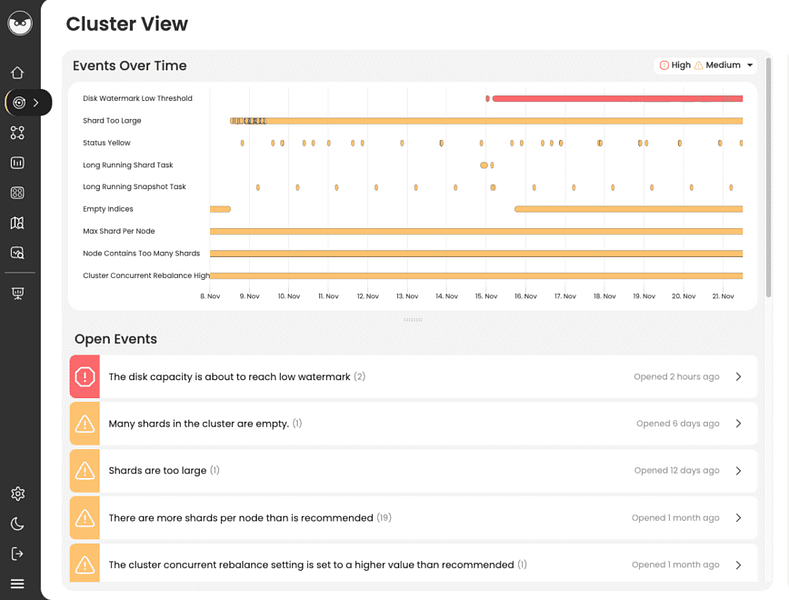Opster Team
Last updated: May 8, 2022
| 1 min readIn addition to reading this guide, we recommend you run the Elasticsearch Health Check-Up. It will detect issues and improve your Elasticsearch performance by analyzing your shard sizes, threadpools, memory, snapshots, disk watermarks and more.The Elasticsearch Check-Up is free and requires no installation.
Overview
In Elasticsearch, recovery refers to the process of recovering an index or shard when something goes wrong. There are many ways to recover an index or shard, such as by re-indexing the data from a backup / failover cluster to the current one, or by restoring from an Elasticsearch snapshot. Alternatively, Elasticsearch performs recoveries automatically, such as when a node restarts or disconnects and connects again. There is an API to check the updated status of index / shard recoveries.
GET /<index>/_recoveryGET /_recovery
In summary, recovery can happen in the following scenarios:
- Node startup or failure (local store recovery)
- Replication of primary shards to replica shards
- Relocation of a shard to a different node in the same cluster
- Restoring a snapshot
Examples
Getting recovery information about several indices:
GET my_index1 GET my_index2/_recovery
Notes and good things to know
- When a node is disconnected from the cluster, all of its shards go to an unassigned state. After a certain amount of time, the shards will be allocated somewhere else on other nodes. This setting determines the number of concurrent shards per node that will be recovered.
PUT _cluster/settings{"transient":{"cluster.routing.allocation.node_concurrent_recoveries":3}}- You can also control when to start recovery after a node disconnects. This is useful if the node just restarts, for example, because you may not want to initiate any recovery for such transient events.
PUT _all/_settings{"settings":{"index.unassigned.node_left.delayed_timeout":"6m"}}- Elasticsearch limits the speed that is allocated to recovery in order to avoid overloading the cluster. This setting can be updated to make the recovery faster or slower, depending on your requirements.
PUT _cluster/settings{"transient":{"indices.recovery.max_bytes_per_sec":"100mb"}}Related log errors to this ES concept
Find & fix Elasticsearch problems
Opster AutoOps diagnoses & fixes issues in Elasticsearch based on analyzing hundreds of metrics.
Fix Your Cluster IssuesConnect in under 2 minutes

Matt Watson
CTO at Stackify





